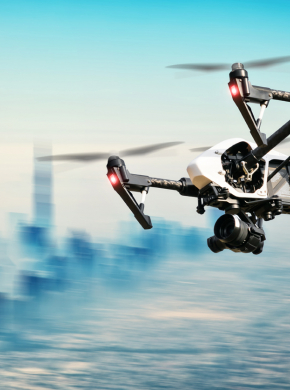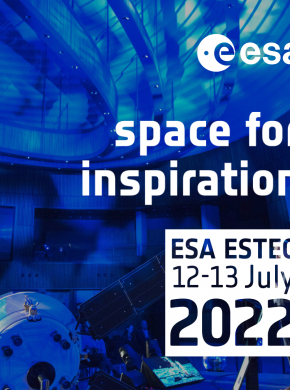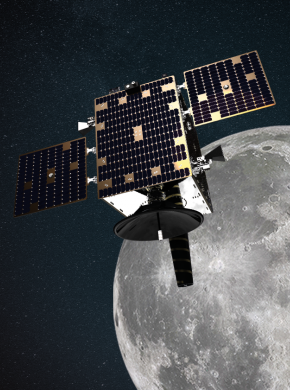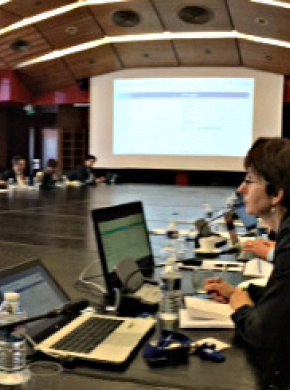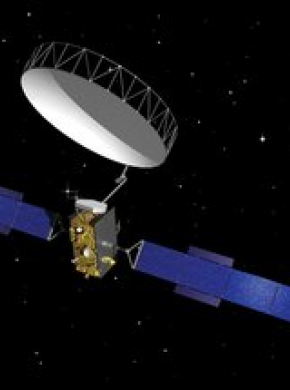Purpose
The main purpose of this activity will be to identify potential satcom functionality and applications that could benefit from the use of continual learning methodologies, and to explore, develop, and simulate different continual learning techniques for the identified satcom applications.
Background
Offline Learning
Machine Learning (ML) is a valuable tool with a range of applications, the most commonly-used being offline learning or batch learning. This involves the advance collection of large amounts of data which are then stored for training, validation and testing purposes. This approach works well for applications where the input data stream is stable and regular, with minimal fluctuation or noise, but if the input changes in any way after deployment this can quickly lead to a degradation of performance known as ‘concept drift.’. As the training and deployment phases in offline learning are separate, and the system does not learn during deployment, every time there are sufficiently drastic changes in the input data, the system must be taken offline, re-trained and re-deployed. In many cases, re-training leads to a situation known as ‘catastrophic forgetting’, where the model’s performance on the original data degrades as it attempts to learn from the new data.
Continual Learning – the evolution of AI
In contrast to the offline learning mechanism, humans have the ability to learn continually from experience in a regime referred to as online learning. Biologically inspired online learning techniques can be emulated, using a technique known as continual learning (also called auto-adaptive learning or continual AutoML). Continual learning allows ML systems to learn continually from a stream of data and, as the input data does not have to be collected and stored to train the model, initial setup is more straightforward. This approach is therefore especially appealing for applications involving high-volume data (such as image analysis or telemetry data collected from multiple sensors). Continual learning techniques incorporate adaptation mechanisms which ensure that the ML model is always in learning mode, as opposed to switching between learning and deployment (non-learning) modes. This enables the model to apply previously-learned knowledge and skills to new situations and so avoids the issue of catastrophic forgetting. .
Continual Learning in a satcom environment
Within satcom satellites, there are multiple scenarios that could make use of continual learning techniques to adapt to new operational situations in real time, thus enabling a concept of processing information and live self-adaptation that is not possible today. Such capabilities could lead to new applications or improved performance including but not limited to:
- the ability to detect and respond to (learn) new sources of interference
- RF transmission link adaptation in response to changing link conditions
- real-time optimisation of ISL pointing
- real-time payload resource optimisation
The implementation of continual learning-based applications would not only reduce the need for a ‘human-in-the-loop’ and increase operational efficiency and autonomy, but could also enable new business models powered by more autonomous and intelligent spacecraft.
Objectives of the Activity
In order to identify potential satcom functionality and applications that could benefit from the use of continual learning methodologies, the activity will incorporate three main stages:
- performing a survey of state-of-the-art continual learning algorithms and identifying and assessing real-life applications where the benefits of continual learning have been proven
- exploring the connection between offline and online learning and the current state-of-the-art methodologies that would allow models that have been pre-trained offline to be modified so they can be enhanced by online/continual learning
- identifying and justifying a suitable system architecture for on-board continual learning applications
WHAT WE ARE LOOKING FOR
We are looking for experts in Machine Learning, preferably with a background in the implementation of Continual Learning algorithms and with expertise in SatCom and on-board digital processors.
ABOUT THIS OPPORTUNITY
The Invitation to Tender (ITT) is open from 29 March 2023 for a period of 8 weeks.
Proposals can be submitted via esa-star (please find link below) until 30 May 2023, 13:00 CET
https://esastar-publication-ext.sso.esa.int/ESATenderActions/details/56….
ABOUT THE ARTES FUTURE PREPARATION PROGRAMME
ARTES FP is a key programme element, at the start of the ARTES ‘feeding chain,’ that offers the opportunity to acquire knowledge on future satcom market perspectives, investigate future system concepts and prepare initial ‘dossiers’ on strategic initiatives that cannot usually be developed by each individual Member State. It is based on the concept of a European common effort to produce quality results which will set the future of satcom.
You can find more information about the Future Preparation programme using the link below:
https://artes.esa.int/future-preparation
NEWS AND EVENTS
Opportunity: Concepts for ultra-large aperture antennas (ARTES FPE 1A.113)
Satellite antenna size and the data throughput achievable in a satellite communications channel are directly related, but the benefits from an increased aperture size can also be used to enable access to smaller ground antennas or to improve…
Opportunity: Towards Standardised Inter-Satellite Link Solutions (ARTES FPE 1A.116)
There has been a steady growth in the number of new satcom systems announcing plans to make use of RF Inter-Satellite Link technology. In addition to reducing the complexity and cost of the associated terrestrial infrastructure, ISL technology…
Opportunity: Advanced Broadband Satcom Solutions for Rotary Wing Aircraft (ARTES FPE 1B.136)
Despite steady order growth for helicopters and an almost exponential growth in rotary wing UAVs worldwide, outside of military and defence applications the utilisation of satellite connectivity onboard such rotary wing aircraft is still somewhat…
REISSUED - Opportunity: Single Channel Full Duplex Techniques for Satellite Communications (ART…
In most satellite communication systems, full duplex operation (i.e., simultaneous transmit and receive functionality) is achieved by using two separate frequency channels with spectral filtering employed to achieve the required isolation between…
Space for Inspiration: Business Edition 2022
Sign up now to join the growing community to discuss the future of commercialisation in exploration. This event is a must for key players in commercialisation ranging from private industry, to public organisations and space agencies to financial…
Opportunity: Open-Source Satellite Constellation Simulator
The communications satellite manufacturing industry is going through a period of profound change. For decades, the primary source of sector revenue has been from building systems designed to operate in geostationary orbits. Within the last few…
The Moon – where no satnav has gone before
The test version of a unique satellite navigation receiver has been delivered for integration testing on the Lunar Pathfinder spacecraft. The NaviMoon satnav receiver is designed to perform the farthest ever positioning fix from Earth, employing…
Opportunity: The Application of Neuromorphic Processors to SatCom Applications
Artificial Intelligence (AI) is set to play a major role in the automation of future satcom systems, enabled by the significant advances in Machine Learning (ML) techniques of recent years. However, the computer processors that AI algorithms will…
Final Presentation Webinar - ARTES Future Preparation Machine Learnin…
ESA would like to invite you to the Final Presentation Webinar of the ARTES Future Preparation (FP) activity Machine Learning and Artificial Intelligence for Satellite Telecommunications.
This Webinar will take place on the 9th of June at…
ESA Satcom Final Presentation Days 2019
This is a unique opportunity to gain an overview of all the recently completed activities and to discuss them with colleagues from both ESA and industry across the satellite telecommunications sector.
5G Round Table – ESA and Space Industry preparing a European Solution
A recent event organised by ESA focussed on role satcoms will play in the realisation of 5G networks.
2017 ARTES Future Preparation Final Presentation Days
This annual event is to share the results of recently completed Future Preparation (formerly ARTES 1) activities. Registration for the event is free and open to anyone based in the ARTES Participating States.





